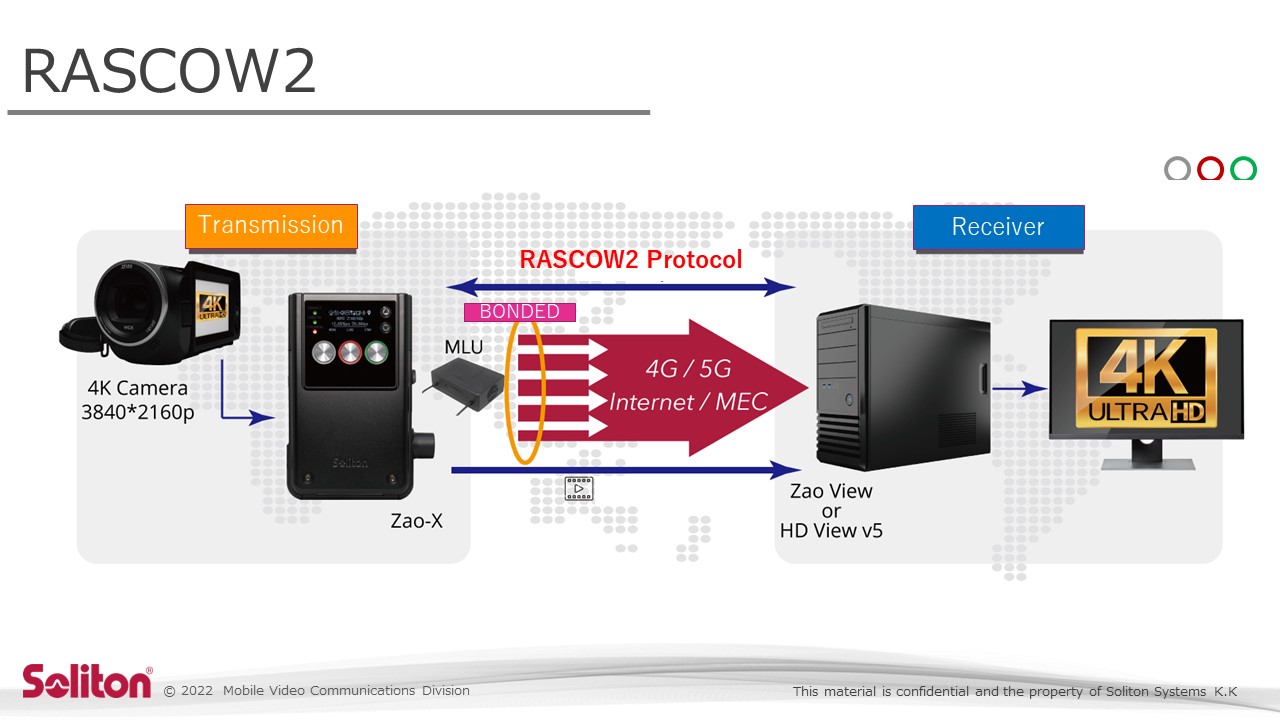
In the dynamic realm of live streaming, conquering the challenges posed by public cellular networks is a daunting task. The inherent unpredictability becomes apparent as bandwidth fluctuates, and signal strength varies, often hindering seamless connectivity when it comes to flawless live streaming. Soliton Systems' Zao-X emerges as a beacon, revolutionizing the landscape by seamlessly overcoming network uncertainties.
RASCOW2 Streaming Protocol: A Technological Triumph
At the heart of this revolution lies the RASCOW2 protocol, a triumph of technological innovation designed to thrive in challenging cellular situations. RASCOW2's adaptive encoding prowess ensures a flawlessly smooth live streaming experience, even in scenarios of low bit rate availability or high network contention, such as crowded public safety or sports events. Beyond 4G, RASCOW2 can utilize bonded wireless network connections, including multiple cellular, 4G, 5G, Wi-Fi, and/or satellite, offering unprecedented adaptability. Additionally, RASCOW2 supports encryption, delivering not only high-quality video streaming but also ensuring security and reliability. But its biggest unique selling point: ultra- low latency like no other!
5G's Promise vs. Reality: Unveiling the Hindrances
So why not just use a standard 5G router with a standard live streaming protocol such as SRT? The anticipation surrounding 5G promised a revolutionary shift in connectivity, yet the reality of its rollout reveals significant hurdles. The challenges hindering widespread 5G availability include infrastructure development, spectrum allocation complexities, and regulatory issues. These factors contribute to the gap between the grand expectations and the pragmatic implementation of 5G networks. However a single 5G network is still a network and will be at the mercy of standard network gremlins. You still need a protocol that can mitigate for lost packets, security, resilience and encoding, decoding, and transcoding latencies. Though SRT is designed for unpredictable networks, it is not designed for low bandwidth situations – it will just stop working. RASCOW2 can go as low as 15kb/sec in “narrow band” mode.
RASCOW2 on 5G: A Leap Beyond
While 5G grapples with realization, RASCOW2 doesn't rest on its laurels. This protocol not only excels in the 4G domain but capitalizes on the lower latency offered by 5G networks. The Zao SDK's recent announcement solidifies RASCOW2's dominance, featuring extreme reliability on both 4G and 5G platforms. Typical latency over 4G is around 65ms, and over 5G around 35ms. These glass-to-glass (camera to remote monitor) values are unprecedented in the live streaming arena.
Conclusion: RASCOW2 – The Magic Source
As we navigate the challenges of live streaming, RASCOW2 emerges as a pivotal player, serving both as a hardware platform for surveillance and broadcast, and as a software SDK for various applications where it can be OEM’d onto other hardware such as a drone. RASCOW2 integrates remote control and ultra-low latency live streaming into one cohesive solution, making it a magic source for applications such as teleoperations, telerobotics, and remote driving where ultra low latency is mandatory for safe operation. The future of cellular live streaming is undoubtedly shaped by the adaptability and reliability embodied by the RASCOW2 protocol.



